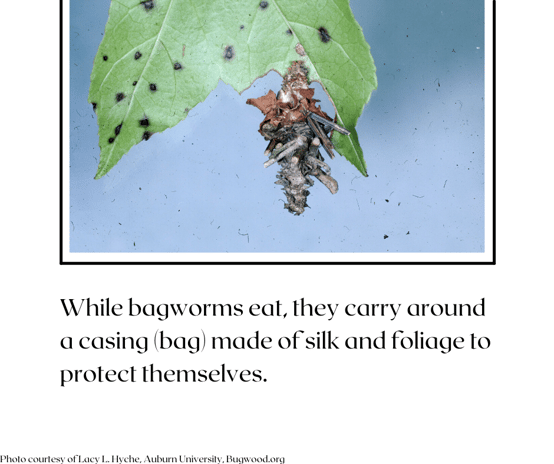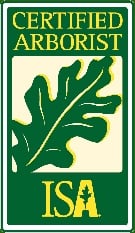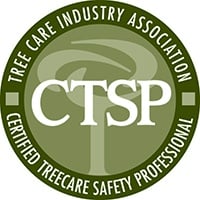Take a closer look at the brown, spindle-shaped structures hanging from your arborvitae. Are they pinecones like you first thought? Or could they actually be evidence of bagworms?
Bagworms can cause some serious problems for your tree or shrub, especially if it's an evergreen. Let's dive into what these bugs are and how they can damage your plants.
What are bagworms?
Bagworms are tiny brown caterpillars. They start out life about 1/8 to 1/4 of an inch long and only grow to be about an inch long.
Bagworms are defoliators, meaning they like to feed on the foliage of trees and shrubs. They love evergreen conifers like arborvitaes and junipers, but they'll also feed on deciduous trees like maples, oaks, and elms.
As bagworms feed, they create a casing (bag) and carry it around to protect themselves. The bag, made from silk and foliage from the host plant, grows as the caterpillar grows so it's always shielded. Those are the structures you may think are pinecones, except they move around.
Bagworms stop feeding as the end of summer approaches and seal each bag shut after securely tying it to a twig, stem, or even a nearby structure. Inside the bag, the caterpillar transforms into a male or female moth. If it's a female, the moth doesn't leave the bag. Male moths, on the other hand, have wings and will leave the bag to look for a waiting female.
After mating, female bagworms produce 500 to 1,000 eggs and then dies. Her eggs remain in the bags until the following spring when they hatch and start the cycle all over again.
The 8-10 week bagworm feeding period usually starts around mid-May in the Charlotte, NC area.
Bagworm damage
Bagworms will devour the leaves or needles of your tree or shrub. The damage will become more noticeable as the bagworms age. Left untreated, bagworm defoliation can cause branch dieback or even kill your tree or shrub.
Why? Because trees and shrubs need that foliage to perform photosynthesis.
If bagworms have moved into one of your healthy deciduous trees, you don't have to worry too much. As you know, deciduous trees can grow new leaves to replace the ones they lose (or the ones bugs eat).
Evergreens, on the other hand, are especially susceptible to severe defoliation and death because their foliage isn't as easily replaced.

Why treat for bagworms in Charlotte, NC now?
If there are only a few bags on your tree or shrub, you can probably handpick and destroy them yourself. If you can get to them all before the eggs hatch, your tree will be in good shape for the spring.
But if there are too many to handle yourself or they're too high up in your tree, we can help. We offer a variety of plant health care treatments to control bagworms, including basal bark sprays, foliar sprays, and soil injections.
Early spring treatments will ensure that bagworms will get a taste of the insecticide and die off before too much damage is done. We can treat your tree and/or shrub for bagworms with soil injections or basal bark sprays starting in March. Both of these treatments will start controlling them within 2-4 weeks and remain effective for 6-9 months.
If they are caught later in the season when more immediate control is needed, a foliar spray can be applied to quickly kill these pests.
Like what you just read?
Then you'll love this: Elm Leaf Beetle: An Incoming Spring Tree Pest








